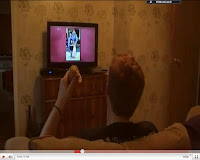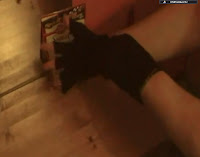The comedy genre is known to evoke humour and laughter within its audience through amusing subjects or characters. It's enjoyed globally but specific humour is received better in some countries more than others. For example, the US is known for its exaggerated comedy and sterotypical characters (as seen in The Other Guys, 2010) while the UK is known for its sarcasm and social realism to create humour (demonstrated in Anuvahood, 2011). Generally, comedy is made for entertainment purposes for an audience and will use the Hypodermic needle Theory to engage them. To prevent young people copying the behaviour and language seen our film, we rated it a 15.
As established in a previous post, there are two main types of comedy; comedy that's comedian-led with well-timed jokes or gags and situation-comedies which create humour through the narrative and order in which events occur. These often overlap. As mentioned in a previous post, comedy can also be subdivided into slapstick, back/dark comedy, parodies and satire comedy. They can also be put into several groups such as teen comedy, romantic comedy, social comedy and gross-out comedy. Our film is a teen comedy with obvious British humour since our characters and plot reflects social realism. It's also set in a college with teenage characters fighting to be the most popular and win the girl, including sexual themes. Since some of the themes and characters are laughable when they shouldn't be, it could also be regarded at black comedy to some extent. Elements important to comedy include:
Timing and Performances: Both of these elements must work effectively together in order to gain the desired result; laughter. Developed and interesting characters are needed in order to create interest amongst the audience and a good script and well thought-out narrative are needed in order to make the best of these characters. However, depending on the country or region of an area, humour varies from person to person. Though it would be globally distributed, as a British institution we decided to create this comedy based on the sarcasm and social realism comedy shown in British cinemas and sitcoms for British audiences. Since we didn't use much of a script in the opening, it was up to the characters and timing of the shots to inform the audience that it was a comedy film and evoke amused feelings.
Representation: The representation of characters and the situations they face is also very important for comedy, helping in reinforce the comic timing. Comedy is often based around conflicts between inferior and superior characters, often of which the weaker character triumphs over the stronger one - whether they win a trophy (girl) or respect and the roles between the two characters are reversed. It should be noted, however, not to make characters so exaggerated that they're racist or offensive as the comic element can be lost.
The Audience: Specific audiences defined through demographic groupings, certification, interests, age, gender, etc, will enjoy certain humour though a majority of it will spread amongst several of the categories. When creating a comedy for a global release or for a niche audience, the preference and type of humour should be noted in order for the audience to have the best experience.
Using Comedy Conventions to Suggest the Genre to the Audience
To challenge the conventions of comedy in our opening, we decided to use the most humourous characters we could think of and introduce them to the audience as seen with other comedy films, but slowly. In order to do this, we hid the character's full identities until the end of the opening so that the reveal of their overall appearance is more humourous. This timing built suspense through the enigma code and the several shots of the boys getting ready, feeding different information to the audience about the characters are what they're interested in. This is the only time in which the audience would have to decipher the text presented to them in the film, using McQuail's 'Uses and Gratifications Theory' and the 'Reception Theory', contrasting regular teen comedy. However, as an opening it only reveals the characters and does not reveal much about the plot. With little information to supply the audience, it ensured that we did not create a trailer or show the whole storyline. It also enabled us to challenge the conventions of comedy openings without creating a trailer or revealing to much about the plot.
Camera Work and Editing
The final long shot of the three main characters walking towards the camera is similar to the film Superbad (2007) as the geeky characters resemble those in our opening through their costume and appearance. We took inspiration from these characters though we tried not to imitate them, but as we were also creating a teen comedy, we struggled to find inventive and distinctive ways of portraying our characters. However, this also shows that we followed a known convention of comedy films; long shots of the main characters. The urban environment of our opening also matches that seen in other films of a similar plot, such as Superbad and Role Models (2009). For example, the bus and cars connote an urban, busy environment in the Superbad and Role Models screenshots below. In comparison to our opening, there is lots of housing and several roads in the final shot. Though not as busy, the urban atmosphere is still portrayed through the closeness of the buildings.
 |
| The Final Long Shot in our Opening |
The editing style of our opening is also seen in various other comedies, such as Role Models when the characters are making their transformation. A series of quick, close ups are put together with razor cuts to build suspense until the final reveal of their costume. We have also used this technique but placed it in the opening whereas it's used in the climax of Role Models. However, it still achieves the same effect and suspenseful atmosphere for the audience.
Our opening sequence:


Role Models sequence:
Costume and Props
On the basis of our character profiles, we created humourous costumes and props to portray our genre whilst suggesting things about each of our characters.
 |
| The 3 main characters |
The main focus and source of our humour in the opening was the costumes of the three boys and so we made them as ridiculous and odd as possible whilst reflecting their personality, background and the stereotypical geek. As students at college, their costumes do not reflect or suggest trendiness and therefore connote the inability to fit in. Stuart wears black trousers with a checkered shirt tucked in with all the buttons done up. His appearance becomes humourous as he appears to be dressed for the wrong occasion, isn't fashionable and contrasts his friends style. Tom wears clothes that are too small for him and a t-shirt that says "I'm in Miami Bitch" demonstrating the type of language to be used in the film, his poor, laughable attempts to fit in with the popular crowd and connotes his superiority over his two friends but not his peers. Finally, Bob mixes smart with casual and humour is evoked with his shirt that's too small for him. Together, they also don't match but fit the stereotypical geeks.
The main focus and source of our humour in the opening was the costumes of the three boys and so we made them as ridiculous and odd as possible whilst reflecting their personality, background and the stereotypical geek. As students at college, their costumes do not reflect or suggest trendiness and therefore connote the inability to fit in. Stuart wears black trousers with a checkered shirt tucked in with all the buttons done up. His appearance becomes humourous as he appears to be dressed for the wrong occasion, isn't fashionable and contrasts his friends style. Tom wears clothes that are too small for him and a t-shirt that says "I'm in Miami Bitch" demonstrating the type of language to be used in the film, his poor, laughable attempts to fit in with the popular crowd and connotes his superiority over his two friends but not his peers. Finally, Bob mixes smart with casual and humour is evoked with his shirt that's too small for him. Together, they also don't match but fit the stereotypical geeks.
 By using props, we were able to enhance the humour of our opening by using those common in comedies and those which are not. The props used were also specific to the character's personalities. Inhalers in comedy are often associated with geeks and so we decided that Bob's character should be the one to use an inhaler to suggest inferiority and fit with his slightly bigger body type. The prop of the blueberry muffin and the women's talk show on TV creates humour in Tom's character because of the femininity of the props, contrasting the stereotypical male activities, such as playing football or video games. Also, Stuart's maths homework creates humour in the situation as the opening is set before college and he's ready early and eager to do work, a common trait of geeky characters.
By using props, we were able to enhance the humour of our opening by using those common in comedies and those which are not. The props used were also specific to the character's personalities. Inhalers in comedy are often associated with geeks and so we decided that Bob's character should be the one to use an inhaler to suggest inferiority and fit with his slightly bigger body type. The prop of the blueberry muffin and the women's talk show on TV creates humour in Tom's character because of the femininity of the props, contrasting the stereotypical male activities, such as playing football or video games. Also, Stuart's maths homework creates humour in the situation as the opening is set before college and he's ready early and eager to do work, a common trait of geeky characters. The Title and Credits Font
To ensure that we created an opening, we used little information through the content of the film and used the titles to create the effect we wanted and give hints about the plot of the film. The titles we used were in a round, scribbly font to reflect the characters of the piece which is not commonly seen in other comedies like Superbad which uses Serif, a font sharper and more professional looking than ours. Sans Serif fonts (similar to ours) connote comedy and we used white throughout a majority of the titles to ensure they stood out from the background. The title, however, was in purple and yellow to help connote humourous themes and fun. The title we chose was "About a Girl" because of it's ambiguity but with it's possible interpretations and connotations of relationships and love as seen in the rest of our film. Other films of the comedy genre also have short, snappy film titles such as "Easy A" (2010) and "Due Date" (2010), with only 2 - 3 syllables and so we wanted to recreate this effect with our title.
Special Effects
In our opening, we didn't use any special effects as this is not a known convention of the comedy genre and would be more iconic for action or adventure. We wanted to keep the realism and verisimilitude of the piece as much as we could and so avoided using things that may distort the portrayed genre. To compensate, we used simple transitions with titles in order to create movement and a more interesting opening for our audience.










